Waylaid in Winter Village: Setting
Welcome back to LEGOctober! My 2013 holiday set, the Winter Village Market, arrived 10 days ago. When I saw the carousel, my first thought was, “Hmmm. Little Brick Township needs a carousel.”
Little Brick Township, however, doesn’t get snow. I had an extra green baseplate, so I thought that maybe I could build the Winter Village Market for the holiday season and then peel the white baseplate off and substitute the green baseplate in 2014.
- The white baseplate
- The green baseplate
- The brick separator — a necessity for changing the setting
Not so fast. The first steps of the instructions called for using plates rather than bricks, and plates do not peel off nearly as easily as the taller bricks. (For those unfamiliar with the various categories of pieces, plates are a third the height of bricks, and tiles are the same height as plates, but with no knobs to attach
another piece on top.) Then there were all the details — the snowballs, the wreaths, the snow on the roofs of the little shops. While I could remove the snowballs and the snow tiles from the roofs with little consequence, I would have to find substitutes for the wreath plates, or I would have awkward-looking empty knobs on the sides of the market stands.
Just as all these details create the atmosphere and enhance the authenticity of the Winter Village Market, details are what make the setting of a story tangible, believable, and interesting. Writers of contemporary realistic fiction (as opposed to writers of fantasy, science fiction, and historical fiction) tend to take the setting for granted. After all, this is a world with which readers are familiar, right?
Still, characters move around in a specific world that comes alive through details incorporated into your story. For example, what is the season in which the scene is taking place? How does the weather of that season affect your characters and what they do? Your characters’ clothing must be consistent with the season, or if it isn’t, there needs to be a reason. What does your point of view character notice about his or her environment as he or she goes about each day? What he or she notices tells us about the setting but also tells us about this character’s personality, situation, desires, and values.
A well drawn setting cannot be easily changed or substituted. If you can transfer your story from one location or time period to another without the entire structure crumbling into a metaphoric pile of bricks, plates, and tiles, your setting may be too generic. It may lack sufficient detail to root the reader in a specific time and place, or the details you offer may not be integrated into the story.
As someone who has written a lot of stories set in South America, I get asked if there’s any way I can change my settings to the United States today. Publishing is a business, and there tends to be more audience for stories set in the reader’s own world than long ago and in countries far away (which begs the question of why fantasy and science fiction are such popular genres today). A story with a well-drawn and well-integrated setting cannot take place anywhere else — or if it does, it will be a completely different story.
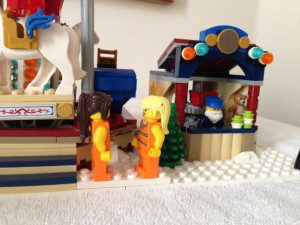
Could we have read the wrong line on the departure board and ended up in Reykjavik instead of Rio de Janeiro?
Check out my earlier posts in the series “LEGOctober,” which offers writing advice via Little Brick Township and my other Lego constructions. “Minifigs: Character, Personality, and Action” discusses character development, and “Complicating the Minifig: Layered Narrative” explores story arcs and how and when to reveal background information.

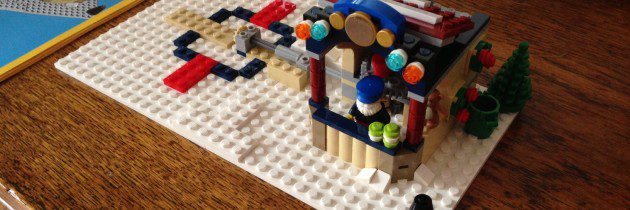
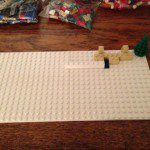
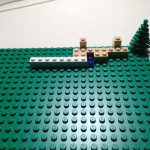
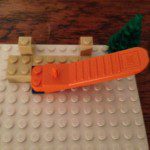
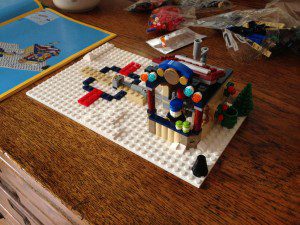
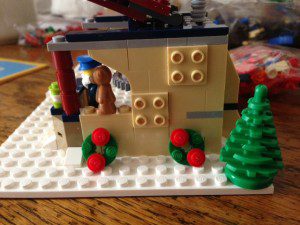
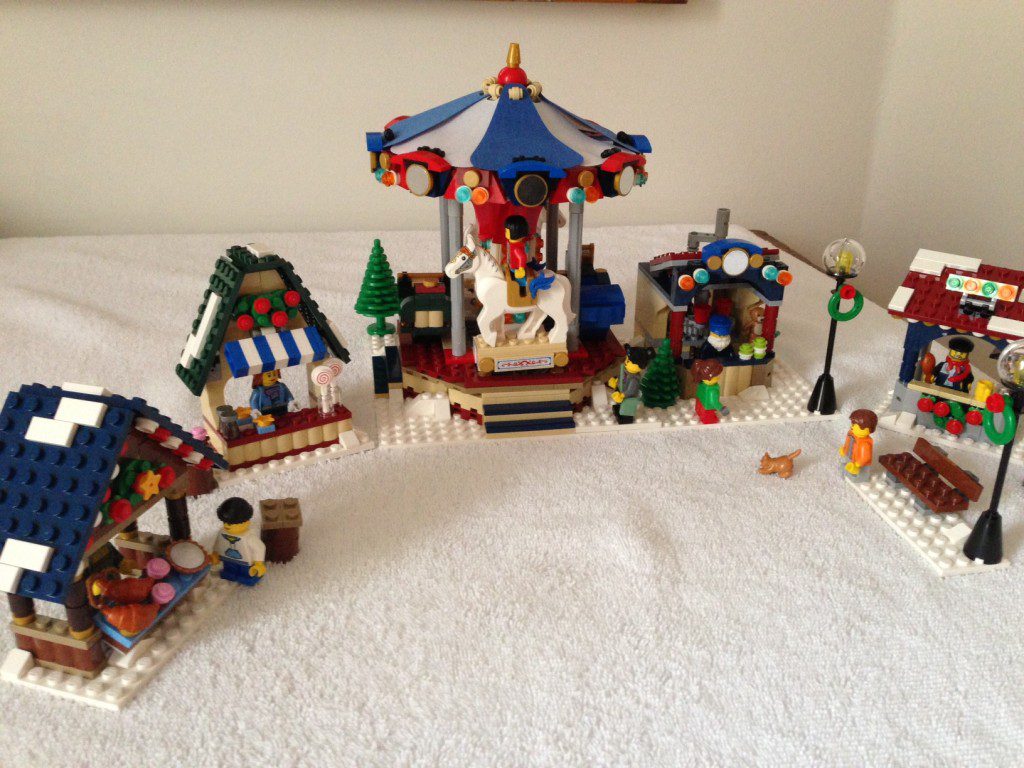
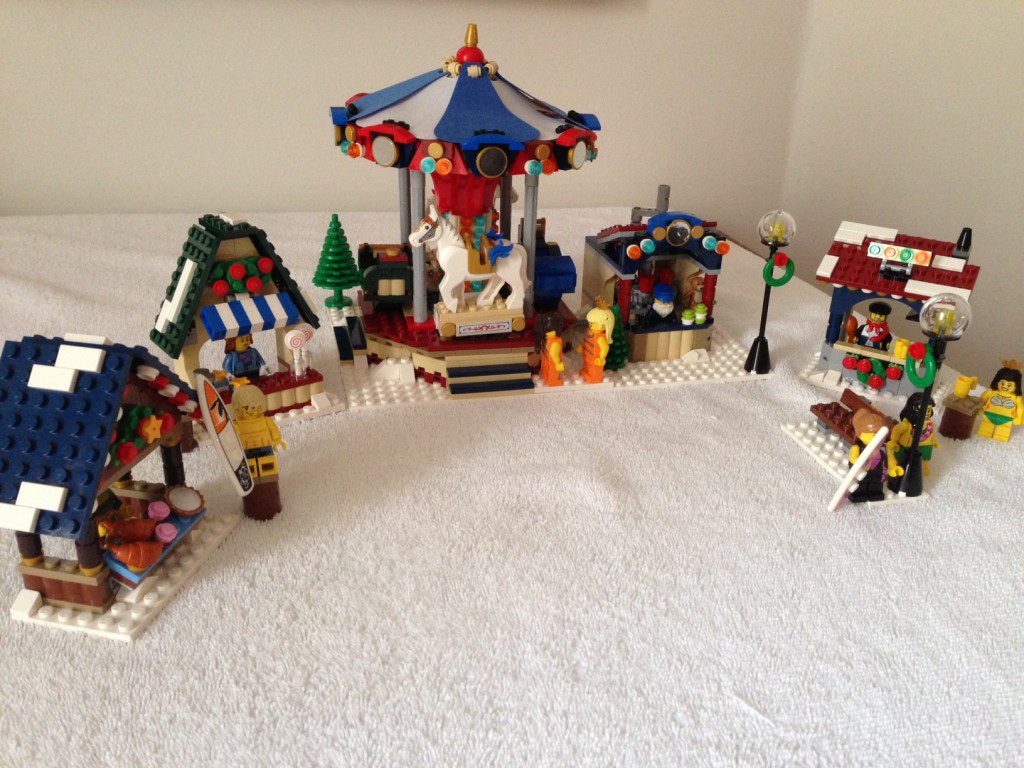





Oh, Lyn! I love this post. Your winter village puts me in the mood for Christmas. I love writing stories set in winter, especially the challenge of making barren scenes come to life.
Your advice is particularly pertinent to world building in fantasy novels. Details are important!
The YA manuscript I just finished is very much a winter book, with characters struggling against the darkness and cold. Snowbanks offer metaphors for their lives and dreams as they climb and/or slide down. All these features of the season can become central elements of the story on both a concrete and a metaphoric level. My last novel took place in late spring and early summer, which had its own set of images and venues for action, and most of my scenes were outdoor scenes as a result.
We’ve got snow on the mountains here, so Karlijn is getting used to a winter environment. She just might like to relocate to the winter village.
I’m looking forward to the pictures! Do you have a Winter Village set? I still have to build last years Cottage, which I ordered but didn’t put together because I was in Portugal for the holiday season. And have you seen the new Parisian Restaurant, due out on January 1? I can’t wait for it. It has nice colors, a more interesting design than most of the modulars, and amazing details.